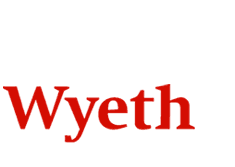 "Venture Capital"-- The words (and their anthropomorphic derivative,"the VC") are virtuously synonymous with start-ups, entrepreneurship,and innovation. According to the common wisdom, the US has done well because of its VCs, Europe less so. Whatever you think about the winners and losers in the VC race, careful attention should be directed to the current state of Venture Capital, lest past perfect, at least with start-ups, fail to achieve the future perfect that so much depends upon for future growth and development and, for IP professionals, the engine for continued good fortunes.
"Venture Capital"-- The words (and their anthropomorphic derivative,"the VC") are virtuously synonymous with start-ups, entrepreneurship,and innovation. According to the common wisdom, the US has done well because of its VCs, Europe less so. Whatever you think about the winners and losers in the VC race, careful attention should be directed to the current state of Venture Capital, lest past perfect, at least with start-ups, fail to achieve the future perfect that so much depends upon for future growth and development and, for IP professionals, the engine for continued good fortunes.Against that backdrop, I took another look at an interesting column that was published in what may have been the last free-standing issue of BusinessWeek magazine (it is now called Bloomberg Business Week, after its acquisition by the eponymous media giant late last year). The article, entitled "How Venture Capital Lost Its Way", and authored by Carl Schramm and Harold Bradley, appeared in the November 30, 2009 issue.
The gist of the article is as follows:
1. Venture capital has been a critical component of innovation. However, venture capital seems to be on the wane. The amounts funded and the number of companies supported by such funding continue to decline. The industries most requiring VC funding, clean tech and biotech, are being shunned in favor of info tech, which have much less need for substantial capital investment.I am hardly the person to evaluate how successful these suggestions for change might be. In a world of "short-termism", I reckon that the problem is deeper than altering the arrangments for the VC investment community. That said, from a more modest perspective, I wonder how the changes in the VC world described by Schramm and Bradly has, or might in the future, affect IP practice. The following questions immediately leap to mind:
2. The root of the problem is the VC financial model, most notably the "2 and 20 rule", where fund managers charged an annual 2% management fee and took 20% of the proceeds of an IPO or sale. Historically (that means the 1980's), VC types were structured as partnerships, where the funds invested mostly came from wealthy individuals. This allowed them to maintain a patient capital outlook for their investments. Choose your companies carefully, and permit yourself a time horizon of 10 years or more for the success of your investment, were the defining characteristics of VC investing in those days.
3. However, when institutions entered the VC game, the dynamics changed. Able to aggregate larger sums than even the most well-heeled private investors, the focus changed from nurturing growth to increasing fees based on ever-larger investment pools. The result is that the venture capital industry has aped the business model private equity, namely the short-term "flip." To keep their investors happy, in the words of the article, "VC funds are ...going for maximum liquidity, creating early payoffs via premature "exits" ...."4. The result is that investment capital is no longer being put to work for long-term use, including for such capital-starved industries as clean tech and high tech. Moreover, the investors themselves are not reaping appropriate return on their investment (over the decade, "an investor would have done better in a small-cap Russell 2000 index than in VC").
5. Schramm and Bradley offer several suggestions to ameliorate the situation: (i) tie management fees to a budget rather than the size of the fund: (ii) pay investors a guaranteed amount before the fund can claim its 20% share; (iii) require the VC fund itself to put more its own funds in the companies in which it invests.
1. Are more patents being filed early on, whatever their quality, mainly in order to "improve" the position of the company for an early exit?
2. If so, does this affect the compensation arrangements for patent drafting and prosecution?
3. Do changing VC patterns affect the staffing requirements of patent law practices?
4. What is the role, if any, in providing strategic IP advice to companies funded by VC's?
5. Do trade secrets or branding matter in such a world?
6. I guess that the overarching question is this: If Schramm and Bradley are correct, and the VC ship is not righted, will the IP profession be better or worse off at the end of the decade?
 . The Amerikat over at our partner blog IP Kat has already covered the legal aspects of the case and can be read in more detail
. The Amerikat over at our partner blog IP Kat has already covered the legal aspects of the case and can be read in more detail  The European Union in its pharmaceutical sector enquiry defined a block buster drug as being one with global revenues of over USD 1 billion in revenues (see
The European Union in its pharmaceutical sector enquiry defined a block buster drug as being one with global revenues of over USD 1 billion in revenues (see 

















